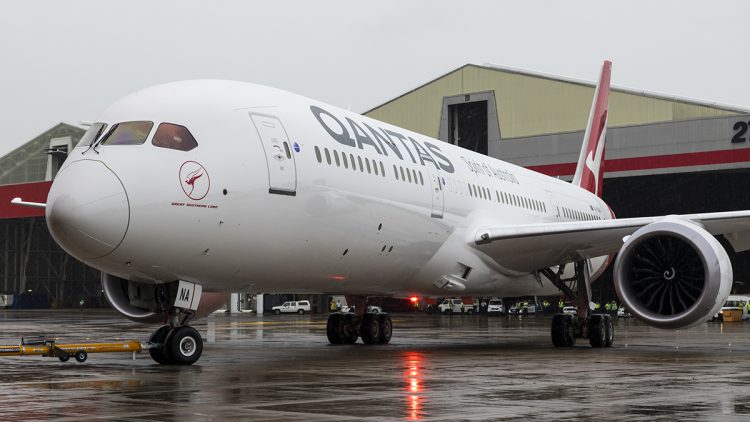
Qantas expects to return to profit growth in the first half of the current financial year amid what chief executive Alan Joyce describes as a “mixed market”.
The airline group said in a trading update on Thursday underlying profit before tax (PBT), which excludes one-off items and which it regards as the best indication of financial performance, is forecast to be in the range of $900-950 million for the six months to December 31 2017.
If the result is in line with guidance, it would represent an improvement of up to 11 per cent from underlying PBT of $852 million in the first half of 2016/17. Qantas posted an 8.4 per cent decline in full-year underlying PBT in 2016/17.
Qantas’s market update said revenue across the airline group for the three months to September 30 was $4.19 billion, up 5.1 per cent from the prior corresponding period.
Meanwhile, revenue per available seat kilometre (RASK), which is a measure of demand, was up 3.1 per cent.
“We’re pleased to see continued strong performance across our portfolio of flying and loyalty businesses in what is a mixed market,” Joyce said.
“We’re making good progress towards our annual target of $400 million in cost and revenue improvements, with the Dreamliner and domestic WI-FI two examples of projects that will make us more efficient and deliver a revenue premium.

“Overall, despite an uptick in fuel costs and the challenges from competitor capacity growth on the international side, the Group remains on track for another strong underlying first half and a successful full year.”
The company’s latest traffic figures showed the airline cut capacity, measured by available seat kilometres (ASK), in the domestic market across its Qantas and Jetstar units by 2.7 per cent in the first quarter of 2017/18.
It has guided the market to a 2-3 per cent reduction in group domestic capacity for the first half, an increase from the forecast one per cent reduction at the company’s full year results presentation in August.
For the first quarter, Qantas’s domestic ASKs were down 3.6 per cent, while RPKs fell 2.3 per cent. As a result, average load factors rose one percentage point to 77.5 per cent.
At Jetstar, which cut domestic capacity by one per cent in the quarter as RPKs fell 0.8 per cent, average load factors for its domestic network were up 0.2 percentage points to 83.4 per cent.
Joyce said the domestic market was healthy but remained very competitive.
“The high rate of revenue growth we’ve seen so far this year is likely to slow when compared with what was a strong second half last year,” Joyce said.
Qantas’s international network reported a 10.8 per cent improvement in total passengers carried, with capacity up 5.4 per cent thanks to recently launched new services such as the return to Beijing in January and the upgauging of some Sydney-Auckland flights to widebodied Airbus A330s that began in July. Average load factors improved 2.2 percentage points to 84.2 per cent.
There are more changes coming in the period ahead, with Boeing 787-9 flights from Melbourne to Los Angeles due to start in December and Melbourne-Perth-London Heathrow nonstop services scheduled to take off from March, replacing the current Melbourne-Dubai-London Heathrow Airbus A380 service.
Qantas is also withdrawing from Dubai by rerouting its Sydney to London Heathrow flights through Singapore, and upgauging one Melbourne-Singapore flight to the A380.
And the airline is adding more trans-Tasman flights from Brisbane and Melbourne to Auckland as Emirates withdraws from those two routes.
Overall, Qantas said its international ASKs would increase about five per cent in the first half, in line with previous guidance, and three per cent in the second half of 2017/18.
This compares with international competitor capacity growth of about three per cent in the first half and 6-7 per cent in the second half, Qantas said.
“There’s been a welcome easing of capacity growth in the international market but the indications are that it is likely to pick up pace again in the second half,” Joyce said.
Qantas said the total fuel cost for the airline group was forecast to be $1.55 billion for the first half, up from $1.49 billion in the prior corresponding period.
The fuel bill for the full 2017/18 year was expected to rise 5.6 per cent to $3.21 billion, from $3.04 billion.










